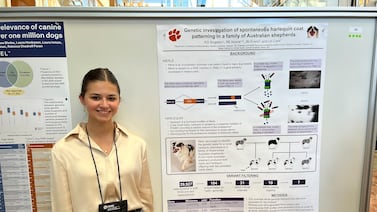This is a guest essay for Healthbeat. Public health, explained: Sign up to receive Healthbeat’s free national newsletter here.
In addition to controlling routine health threats, public health agencies are responsible for emergency response to outbreaks, bioterrorism events, extreme weather events, and other urgent threats.
During these events, health agencies activate incident management systems to organize their personnel and resources. In these systems, staff are reassigned from their usual duties into a new structure with defined leadership, planning, logistics, operations, and communications roles. If the event is sufficiently large, the health agency’s incident management may be one part of a larger state or federal response known as Emergency Support Function 8.
Having served as incident manager for health emergency responses domestically and globally, I’ve seen how quickly public health agencies can get overwhelmed by the sheer volume of information, decisions, and coordination required.
Artificial intelligence systems can improve the speed and accuracy of disease surveillance. In an emergency response, AI, if developed and deployed responsibly, can improve planning and documentation, countermeasures deployment, and communication.
AI can help with crush of information updates
When an incident management system is activated, the volume of information multiplies exponentially. Updates arrive by email, text, meeting notes, spreadsheets, shared folders, and, more often than not, conversations in the hallway. During large-scale emergencies, incident management meetings may occur as often as every eight hours, every day of the week, requiring rapid synthesis of new information and clear documentation of action steps to ensure coordination between staff who are leaving duty and those on duty. This documentation often becomes the official record of response activities and is essential for day-to-day operations and legal accountability, including periodic evaluation.
AI tools can improve this process in several ways.
“Ambient AI” can serve as a real-time recorder, taking notes during meetings and automatically extracting action items, decisions, and unresolved issues, similar to how it is being used as a scribe in doctors’ offices. Rather than relying on overworked staff to compile electronic files, emails, and verbal reports, AI agents can gather this information from shared systems and draft situation reports and other required documents for leadership, elected officials, and partner agencies.
Another overlooked but critical aspect of incident management is evaluation, such as “after action reports” and improvement plans. Evaluating an emergency response requires observing meetings, conducting structured interviews, and reviewing records, a process that often happens months after an event has ended. AI systems that are integrated into the response from the beginning can monitor decisions, measure timelines, and assess whether key benchmarks are being met. They can also collect feedback from frontline workers through surveys or chat-based tools, accelerating and enhancing the evaluation process without requiring more staffing.
AI can also help with workforce and resource planning. In routine times, public health always has more needs than people or supplies available; this gap becomes even worse during emergencies. AI tools can ingest rosters of personnel, track their hours, assignments, and availability, and match them to the operational needs of the emergency. It can flag gaps and resource bottlenecks for leadership to use when advocating for more resources. AI is uniquely good at calculating quantitative metrics and visualizations that are highly persuasive to budget officials but often difficult for staff to produce quickly during an emergency.
AI can help deploy countermeasures in health emergency
In public health, “countermeasures” are the tools used to control or reduce harm during a health emergency. These include diagnostic tests, personal protective equipment, antibiotics, vaccines, and vector control products like insecticides or bed nets. During an emergency, these tools must be procured, distributed, and tracked in real time.
Managing this process is a complex logistical challenge. Emergency operations centers must identify where supplies are located, how much is available, how quickly they can be deployed, and whether they are being used appropriately. AI systems can help monitor inventory levels in real time, integrate data across warehouses or distribution points, and model future supply needs based on case projections.
For countermeasures that involve patient care, such as diagnostic testing and dispensing antibiotics or vaccines, AI can also improve quality and safety. These operations often involve pre-existing large-scale clinics or “pop-up” facilities — both of which require protocols that must be followed precisely, including record keeping that adheres to routine health care standards.
AI-powered tools can assist with registration, eligibility screening, dosage calculation, scheduling follow-up appointments and reminders, and tracking post-appointment symptoms. They can flag deviations from protocol or identify unusual trends that might signal an adverse event or error in procedures, such as missing data, an unusually low number of positive diagnostic tests, or high number of patients reporting a fever after their appointment.
AI can help improve communication in a health emergency
Probably the greatest challenge I faced as an incident manager was making sure the right information got to the right people with the right style and content as soon as it was needed. This could be information going internally within the agency, such as to the health commissioner or other leaders, or externally to other government or non-governmental groups. Because this was a public health emergency, it was critical for these messages to reflect the different perceptions of risk, level of technical knowledge, and desire for detail for each of these audiences.
Generative AI systems are uniquely skilled at summarizing complex technical information in formats that are easy to read and act on. Notes can be input in a messy and incomplete format, and the output will often be organized coherently. When trained on previous correspondence or given sufficient direction about the audience, these systems can also ensure the format, tone, and detail align with the audience. For example, the same content can be revised by the AI system for elected officials, partner agencies, and journalists with different levels of data and tailored talking points for each.
Because generative AI may get things wrong — sometimes horribly wrong when they “hallucinate” information — a skilled human must always carefully review and revise the text before distribution. In an emergency, where time is short, however, editing a document is far more efficient than writing one.
Reaching the public, especially those with the least resources, requires cultural and linguistic competence. AI tools are increasingly capable of real-time translation and sentiment analysis. A chatbot deployed during an emergency can deliver guidance in multiple languages, detect confusion or mistrust in responses, and escalate conversations that need human follow-up. AI systems can also monitor social media, online forums, and community channels to detect rumors, misinformation, or new concerns, helping agencies adjust their messaging and response strategies. All of these systems, however, must have intensive human oversight, given the health, legal, and political risks of error.
AI can help free up time for workers to focus on protecting lives
During every emergency I’ve worked on — whether it was Ebola in Sierra Leone or Covid-19 in New York City — my email inbox was routinely filled with spreadsheets, phone trees, and requests for action that I could barely keep up with. I and many of my colleagues fear our health emergency response systems are too labor-intensive, reactive, and vulnerable to error.
As threats rise and public health systems weaken, AI systems may help sustain or even improve our ability to respond by reducing the burden of repetitive cognitive tasks and giving public health practitioners more time to focus on protecting lives.
Dr. Jay K. Varma is a physician and epidemiologist. An expert in the prevention and control of infectious diseases, he has led epidemic responses, developed global and national policies, and implemented large-scale programs that saved hundreds of thousands of lives in Asia, Africa, and the United States.







